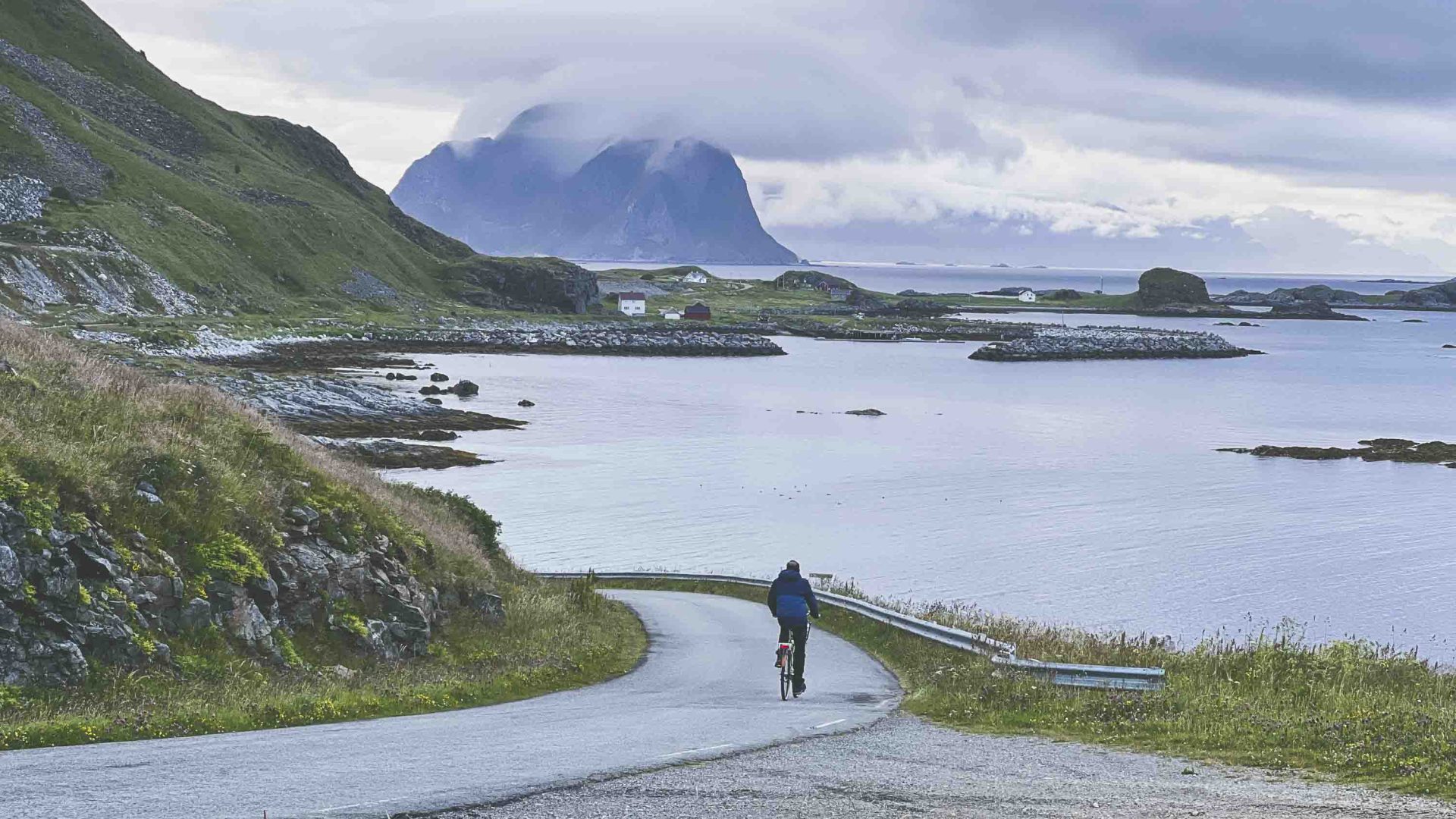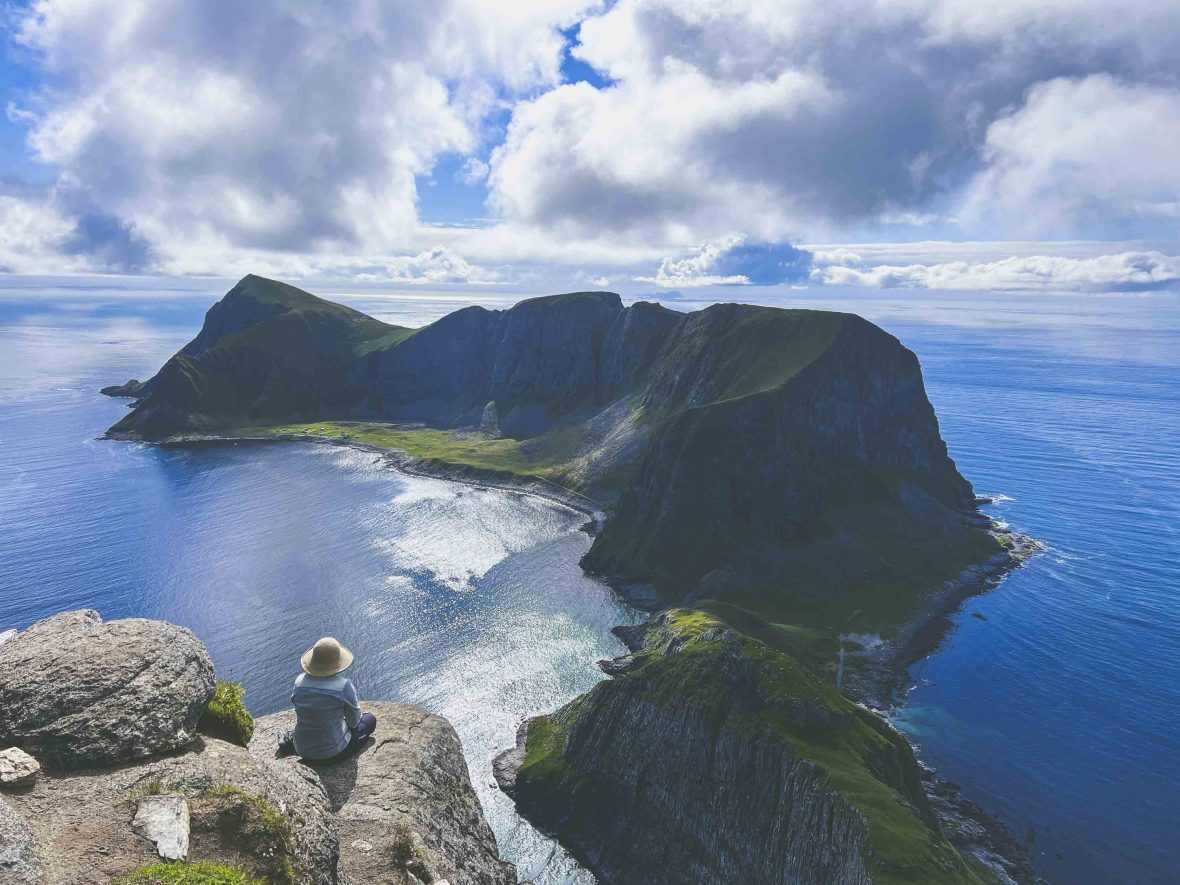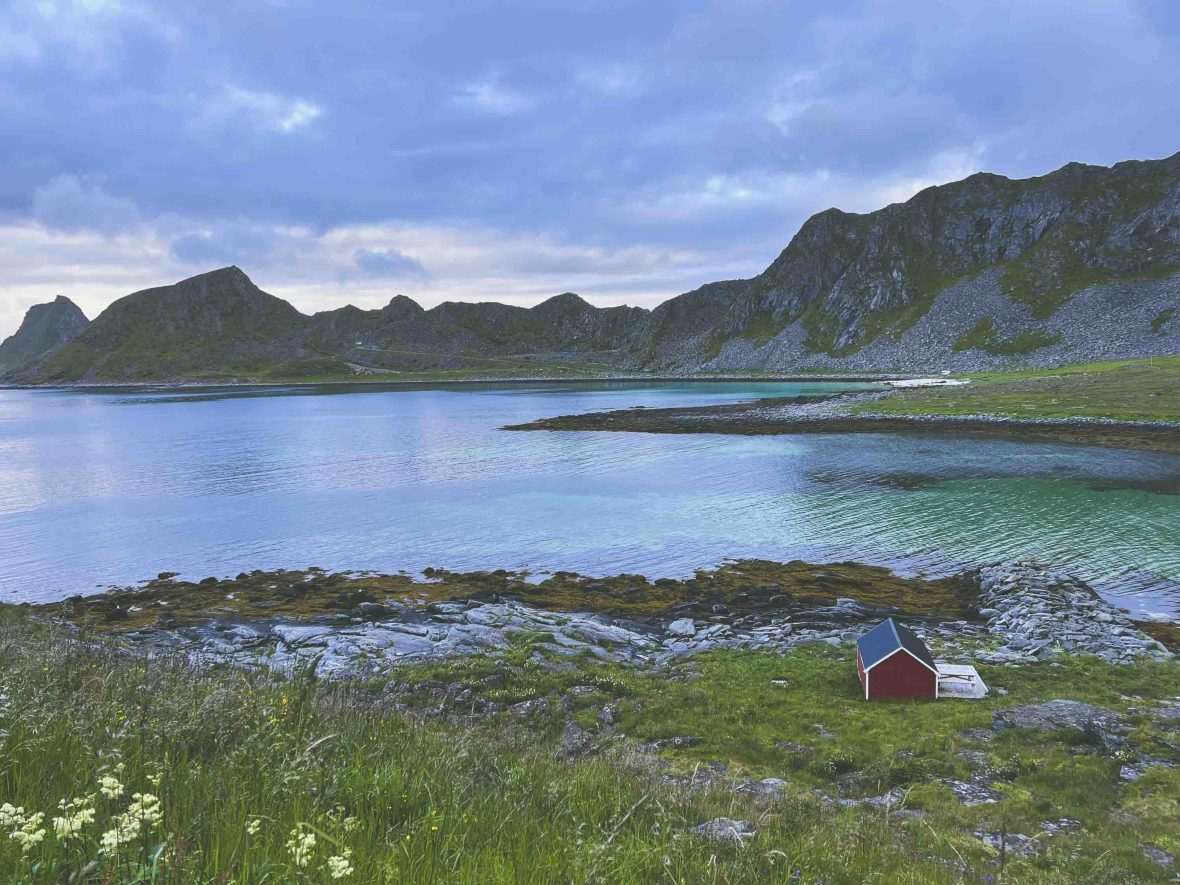
Through a combination of flight guilt and the desire to take one of the world’s most scenic and underrated train journeys, writer and environmentalist Shivya Nath embarks on an eccentric journey through Europe.


Through a combination of flight guilt and the desire to take one of the world’s most scenic and underrated train journeys, writer and environmentalist Shivya Nath embarks on an eccentric journey through Europe.
I looked up from my book as the train began to slow down. Outside the window, the landscape had transformed again. Since boarding from the 11th-century Norwegian town of Trondheim that morning, we had journeyed past Norway’s glorious fjords, glacial lakes, mountain settlements of colorful houses, snowy peaks in the Saltfjellet range and more tunnels than I could keep track of (there are, according to the official count, 154 tunnels in total).
Through the speaker, the driver’s booming voice asked us to keep our eyes peeled as we crossed the Arctic Circle—the imaginary line marking the Earth’s northernmost region, beyond which we can experience 24 hours of daylight or darkness, depending on the time of the year.
In the vast, flat, desert-like terrain out my window, I spotted a pyramid of stones marking the 66°33’ N latitude and I felt adrenaline rush through my entire being. We had done it: My partner and I had made it from Switzerland to the Arctic, entirely by train.

This somewhat eccentric ‘no fly’ journey was rooted as much in flying guilt as in the sheer thrill of embarking on what might be one of the world’s most scenic (and underrated) train voyages. We started in the towering, rugged Alpine peaks of Switzerland, passed through the industrial heartland of Germany, the rolling prairie-like landscapes of Denmark and the dense primary forests of Norway before finally arriving in the dramatic, otherworldly scenery of the Arctic.
Journeying through a mind-boggling diversity of landscapes, I was delighted to witness what felt like the future. Through our window into Germany, we spotted agrivoltaic farming—a pioneering use of land that simultaneously generates agriculture and solar power—and we saw offshore wind farms in the North Sea.
Taking trains over nearly a week from Lucerne in Switzerland to Bodø, the end of the train line in the Norwegian Arctic, allowed us to connect with people and places that we could never have done had we hopped on a plane instead.
Our ultimate destination was Værøy, one of the smaller and most charming towns of the Lofoten Islands. Along the way, I was reminded of the joys of slow travel, the impact of climate change, and why swapping a flight for a train is not for everyone.
In a surprisingly overbooked train from Hamburg to Copenhagen, we lingered in the corridor until a kind Danish couple, disembarking earlier than planned, offered us their seats for the long journey.
Fascinated by the long distance we’d traveled, a female conductor on Norway’s longest train line, from Trondheim to Bodø, explained why she loves to do this journey over and over again. “The seasons are always changing,” she said, “and the landscapes feel new each time I’m on board.” She added that being on this train is also a reminder that we’ve lived through some dark times—the railway line was built partially by prisoners captured during World War II, in extreme Arctic weather conditions.
Journeying through a mind-boggling diversity of landscapes, I was delighted to witness what felt like the future. Through our window into Germany, we spotted agrivoltaic farming—a pioneering use of land that simultaneously generates agriculture and solar power—and we saw offshore wind farms in the North Sea. With a few hours to kill between train connections, we tasted what was probably the best plant-based food on our journey at Tant Anci & Fröken Sara, a neighborhood café in Sweden’s hip, underrated city of Sundsvall—a place that might not have crossed our radar otherwise.
From the end of the train line in Bodø, we finally caught a public ferry to the island of Værøy, at the far end of the Lofoten Archipelago. Værøy is one of the world’s northernmost locations, home to only 800 or so people, and is jaw-droppingly beautiful. Shades of icy blue danced on the Norwegian Sea, dramatic cliffs jutted out of the water, 12th-century churches marked the coast, wildflowers bloomed across the mountains, and—surprisingly—soft white sand beaches lay even this far north into the Arctic.
As well as costs, this journey emphasized that not everyone has the passport privilege to even embark on something like this. I’ve seen my colleagues from the Global North—travel writers, train enthusiasts and conscious travelers—take off on epic land voyages at the drop of a hat. On the other hand, an Indian passport holder like me must first navigate archaic visa rules.
On these magical summer days with nearly 24 hours of daylight, we hiked and cycled late into the night, cooked midnight meals with bright light pouring in through the windows, felt disoriented trying to decipher pink sunset skies from golden sunrises, and slept with eye masks. The winds were harsh, but the people warm—and over many conversations, we learnt that the weather here was warming too.

Our host, who also managed the local tourist center, confessed his disappointment at the first bad review his B&B—one of the handful on the island—had received just a few days ago. While building a studio to host guests many years ago, he had gone to great lengths to ensure it would remain insulated from the bone-chilling cold of the Arctic.
But erratic weather patterns had led to one of the warmest summers in Værøy, and guests complained of the studio being “too warm.” According to one study, the Arctic has already warmed almost four times faster than the global average, impacting not just local fisheries and marine life, but also carrying the potential of a feedback loop that can further accelerate global temperatures.
Værøy wasn’t the only place where we rubbed shoulders with the visible impact of climate change. On the return journey, we found ourselves in the midst of an intense heatwave that had gripped an unprepared Copenhagen. My skin was baking like the potatoes in the indoor food market of Torvehallerne, and at least two cafés where we went seeking a cold brew announced they’d run out of ice.
While these brushes with the reality of living in a climate-altered world justified our decision to embark on this low-footprint journey, I confess that I felt exhausted towards the end of our 5,000-mile-plus (8,000+ kilometers) train adventure, which had been spread out over a month. Instead of a few hours on a flight to Norway and back, we had spent nearly 74.5 hours on trains—some uber-comfortable like the TGV, but others that we couldn’t wait to get off.
The costs were significantly different too. Through travel writing collaborations, I obtained Eurail passes and Airbnb nights to support our journey, but we still ended up shelling out for the cost of transit hotels along the way. Altogether, a ‘no fly’ journey like this could easily add up to a couple thousand Euros. The math made me realize that not everyone can afford slow land journeys; in terms of money and time, but also in terms of the mental fortitude it could demand.

As well as costs, this journey emphasized that not everyone has the passport privilege to even embark on something like this. I’ve seen my colleagues from the Global North—travel writers, train enthusiasts and conscious travelers—take off on epic land voyages at the drop of a hat.
On the other hand, an Indian passport holder like me must first navigate archaic visa rules. In the few regions where my passport does allow me to cross land borders with a single visa (like the Schengen visa in Europe, which involves its own stack of documentation) or visa on arrival, I’ve been interrogated many times. While crossing the border from Honduras to Nicaragua for instance, the immigration officer repeatedly held my US visa against some infrared light to determine its authenticity, while the rest of the bus—full of Western and local travelers—waited impatiently for my release.
While crossing into Armenia after a long bus ride from Iran, the officer repeatedly questioned me about the “real” motive of my journey. Even within the Schengen region, our passports and visas were constantly checked; sometimes with a ‘why are you here?’ frown, sometimes with a welcoming smile.
These days when I feel gripped by flying guilt, I think wistfully back to our voyage to the land of the midnight sun. Through it, I’d hoped to find clarity on the increasingly uncertain future of travel. But what I actually learned is that some journeys help us find answers, while others leave us with more questions.
***
Adventure.com strives to be a low-emissions publication, and we are working to reduce our carbon emissions where possible. Emissions generated by the movements of our staff and contributors are carbon offset through our parent company, Intrepid. You can visit our sustainability page and read our Contributor Impact Guidelines for more information. While we take our commitment to people and planet seriously, we acknowledge that we still have plenty of work to do, and we welcome all feedback and suggestions from our readers. You can contact us anytime at hello@adventure.com. Please allow up to one week for a response.

Shivya Nath grew up in the Indian Himalayas, and is an award-winning travel writer, author and sustainable tourism consultant. She pursued a nomadic life for nearly seven years, living with remote communities around the world, and writing stories at the intersection of travel, the environment and local communities. She is the founder of Climate Conscious Travel, where she works with destinations and businesses to integrate community-centric climate action in tourism offerings.




Can't find what you're looking for? Try using these tags: